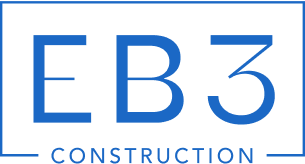Contractors reportedly paid around $97 billion more in materials and labor than expected in 2023. This staggering overrun highlights the critical importance of construction cost control in today’s volatile market. Rising inflation, supply chain disruptions, and labor shortages continue to threaten project profitability across the industry.
Construction cost control is the systematic process of planning, estimating, budgeting, monitoring, and controlling project expenses throughout the project lifecycle to ensure work stays within the approved budget. This discipline goes beyond simple expense tracking to identify cost variances early and trigger corrective actions before small issues compound into major financial problems. Effective cost control supports financial stability, optimizes resource allocation, mitigates project risks, builds stakeholder confidence, and enables on-time, on-budget project delivery for owners and general contractors alike.
How Does Construction Cost Control Work Across The Project Lifecycle?

Construction cost control operates through distinct phases, each requiring specific approaches to maintain budget discipline. We structure our cost management around five critical stages that align with project delivery milestones.
Preconstruction Planning Sets The Foundation
During preconstruction, we define project scope, objectives, and timelines with precision. This phase demands rigorous cost estimating using analogous, parametric, and bottom-up methods to capture all project elements. We involve operations teams early to align means and methods with field realities, preventing costly disconnects during execution.
Our approach establishes a comprehensive budget baseline supported by detailed cost codes and a cost breakdown structure. This framework becomes the reference point for all future cost tracking and variance analysis. The baseline must account for labor, materials, equipment, subcontractor fees, and overhead costs with granular detail.
Procurement And Contracts Drive Early Control
Effective procurement requires clear, complete contracts that define scope boundaries and payment terms. We level bids systematically to ensure accurate comparisons and buy out quickly to lock in favorable pricing. Fixed pricing arrangements protect against market volatility when feasible.
Close vendor and subcontractor management becomes essential during this phase. We establish performance expectations, payment schedules, and change order procedures upfront. This proactive approach prevents disputes and maintains cost predictability throughout the project.
Execution Demands Real-Time Monitoring
During construction execution, we track actual costs in real time and compare them against our budget baseline continuously. Monthly, line-by-line forecasts with field leaders ensure early identification of cost variances. These sessions involve superintendents, project managers, and key trade partners to maintain transparency.
Labor management requires proactive oversight with regular productivity assessments and staffing adjustments. We implement formal change management processes that require documented approvals before budget modifications. Resource allocation follows leveling and smoothing principles to optimize efficiency and minimize waste.
Material control incorporates inventory tracking and just-in-time delivery systems to reduce carrying costs and storage requirements. Open stakeholder communication operates from a single source of truth, eliminating conflicting information that can lead to cost overruns. Regular financial reporting and cash flow monitoring maintain project financial health.
Risk Management And Performance Measurement
We identify risks early in the project lifecycle and establish contingency reserves appropriate to project complexity and market conditions. Market trend monitoring helps anticipate price fluctuations and supply chain disruptions that could impact costs.
Performance measurement relies on key metrics including cost variance, cost performance index, and earned value analysis. These indicators provide objective assessments of project financial health and trigger corrective actions when necessary. Regular performance reviews with stakeholders ensure alignment on project financial status.
Closeout Drives Continuous Improvement
Project closeout includes comprehensive audits of completed work to validate final costs and identify lessons learned. We analyze cost performance against initial estimates to refine our estimating processes and improve future project budgets.
These audits examine procurement decisions, change order management, and resource allocation effectiveness. The insights gained inform our cost control procedures and strengthen our approach to future projects. Documentation of best practices and problem areas supports organizational learning and improved cost management capabilities.
What Practical Strategies Keep Projects On Budget?
Construction projects demand hands-on cost management strategies that teams can implement immediately. These proven approaches work across project phases, from preconstruction planning through final closeout.
Monthly forecasting forms the backbone of effective cost control. We establish a regular rhythm of reviewing current costs against projected expenses with our superintendent and key project stakeholders. This practice catches budget variances early when corrective actions still have maximum impact. Field data from the superintendent provides critical insights into productivity rates, material usage patterns, and emerging issues that could affect the bottom line.
Preconstruction Planning And Field Alignment
Detailed preconstruction planning prevents costly surprises later in the project lifecycle. We align our estimating process directly with field operations by involving superintendents and project managers in the early planning stages. This collaboration ensures that our estimates reflect realistic means and methods rather than theoretical calculations.
The key lies in bridging the gap between office estimates and field execution. Our field teams understand site conditions, equipment capabilities, and crew productivity better than anyone. When estimators work closely with these teams during preconstruction, the resulting budgets account for actual construction sequences and resource requirements.
Labor Management And Scope Control
Labor costs can make or break project profitability, requiring continuous monitoring and adjustment. We track labor hours against budget allocations weekly, adjusting staffing levels and work assignments as scope changes emerge. This proactive approach prevents labor overruns from spiraling out of control.
Scope control becomes particularly critical when project requirements shift. We maintain detailed records of authorized work versus actual work performed, ensuring that any changes to staffing or hours align with approved scope modifications. This discipline prevents unauthorized work from eroding project margins.
Subcontractor Management And Procurement
Effective subcontractor management begins with the bidding process. We solicit multiple bids for each trade, then level these bids to ensure accurate comparisons. Bid leveling involves adjusting proposals to account for differences in scope, exclusions, and assumptions.
Speed matters in the buyout process. Once we complete bid analysis, we execute subcontract agreements quickly to lock in pricing before market conditions change. Fixed pricing becomes our preference whenever feasible, as it transfers price escalation risk to subcontractors who can better manage material costs within their specialized trades.
Change Order Control
Change orders represent one of the biggest threats to project budgets, demanding rigorous approval processes and transparent tracking. We require written approval for all change orders before authorizing work, preventing costly disputes later. Our change order logs remain visible to all stakeholders, creating accountability and preventing scope creep.
The goal with change orders is achieving one-to-one cost recovery. Every change that increases project costs should generate corresponding revenue. This principle protects project margins while ensuring that necessary modifications don’t compromise profitability.
Technology And Market Intelligence
Real-time cost tracking technology provides the data foundation for effective cost control. We leverage construction management software to monitor expenses as they occur, comparing actual costs against budget allocations continuously. Historical data from completed projects informs future estimates and reveals patterns that might otherwise go unnoticed.
Market intelligence guides procurement timing and material selection decisions. We monitor trends for key materials and labor rates, adjusting our procurement schedule to capitalize on favorable pricing windows. Early material purchases can lock in favorable pricing, while strategic delays might avoid price spikes.
Yearly audits of completed projects reveal lessons learned that strengthen future cost control efforts. These reviews identify recurring problems, successful cost-saving measures, and areas where our estimating consistently runs high or low. We apply these insights to refine our estimating methods and adjust our contingency planning.
Contingency planning extends beyond simple budget reserves. We develop specific response plans for common delays and bottlenecks, enabling rapid action when problems emerge. Acting before issues escalate prevents minor cost overruns from becoming major budget disasters.
Which Tools, Reports, And KPIs Support Cost Control?

Effective construction cost control relies on integrating the right technology, maintaining accurate reporting systems, and tracking meaningful performance indicators. We use a layered approach that combines digital tools, structured reporting, and data-driven analytics to maintain budget discipline across project phases.
Construction Management And Financial Tracking Tools
Modern cost control starts with robust software platforms that centralize project data and automate routine calculations. Construction management systems serve as the backbone for expense tracking, integrating with accounting platforms to provide real-time visibility into project finances. These platforms enable us to monitor labor costs, material purchases, and subcontractor payments within a single interface.
Cost estimating software supports accurate budget development through parametric modeling and historical data analysis. Earned value management systems integrate scope, schedule, and cost data to measure project performance objectively. Financial reporting systems connect project-level expenses to corporate accounting, ensuring accurate cash flow projections and compliance with financial controls.
Spreadsheets remain valuable for detailed calculations and custom reporting, particularly when integrating data from multiple sources. However, we rely primarily on integrated platforms that reduce manual data entry and minimize calculation errors. Cloud-based systems enable field teams to input costs and progress updates directly, improving data accuracy and timeliness.
Essential Reports And Documentation Systems
Regular cost reports form the foundation of financial oversight, comparing actual expenses against approved budgets on weekly or monthly cycles. These reports highlight variances by cost code, enabling quick identification of budget deviations. Cash flow projections track planned versus actual disbursements, helping manage working capital requirements and identify funding needs.
Change order logs maintain complete records of scope modifications and their financial impact. We structure these logs to track approval status, cost impact, and schedule effects for each change. Expense approval workflows ensure proper authorization before commitments, with digital systems routing purchases through appropriate approval levels based on dollar thresholds.
Dashboards provide visual comparisons of actuals versus budget across multiple dimensions. These tools display cost performance by phase, trade, or work package, enabling rapid identification of problem areas. Interactive dashboards allow project teams to drill down from summary views to detailed line items, supporting both high-level oversight and granular analysis.
Key Performance Indicators And Analytics Framework
Cost variance analysis measures the difference between budgeted and actual expenses, providing the most direct indicator of budget performance. We calculate cost variance at multiple levels, from individual work packages to total project cost, enabling targeted corrective actions. Positive variances indicate under-budget performance, while negative variances signal potential overruns.
Cost performance index represents the efficiency of cost utilization by comparing earned value to actual costs. A CPI above 1.0 indicates favorable cost performance, while values below 1.0 suggest cost overruns. This metric helps predict final project costs based on current performance trends.
| KPI | Description | Formula |
|---|---|---|
| Cost Variance (CV) | Measures the difference between the budgeted cost of work completed and the actual cost incurred. | CV = Earned Value (EV) – Actual Cost (AC) |
| Cost Performance Index (CPI) | Indicates cost efficiency of budgeted resources. Values above 1 indicate cost savings. | CPI = Earned Value (EV) ÷ Actual Cost (AC) |
| Schedule Performance Index (SPI) | Evaluates how efficiently project teams are adhering to the planned schedule. | SPI = Earned Value (EV) ÷ Planned Value (PV) |
| Estimate at Completion (EAC) | Forecasts the total cost of the project based on current performance. | EAC = AC + (BAC – EV) ÷ CPI |
| Budget at Completion (BAC) | Represents the total approved budget for the project. | BAC = Total Planned Cost of the Project |
Earned value analysis integrates cost and schedule performance into a comprehensive project health indicator. This methodology compares planned work, completed work, and actual costs to assess both current performance and future projections. Schedule accuracy metrics track milestone achievement and critical path performance, as schedule delays often drive cost overruns through extended overhead and resource inefficiencies.
Labor productivity indicators measure output per labor hour or cost, helping identify efficiency trends and resource optimization opportunities. We track productivity by trade and work type, enabling targeted improvements in underperforming areas. Historical data analysis supports more accurate future estimates and identifies patterns that affect project outcomes.
Advanced Analytics And Predictive Capabilities
Predictive analytics leverage historical project data to forecast potential cost overruns and schedule delays before they occur. These systems analyze patterns in past projects, current performance trends, and external factors like weather or material price fluctuations. Early warning capabilities enable proactive management responses rather than reactive problem-solving.
Inventory tracking systems monitor material quantities, costs, and usage rates to optimize procurement timing and quantities. Just-in-time delivery strategies reduce carrying costs while ensuring material availability when needed. Digital tracking prevents over-ordering and identifies opportunities for bulk purchasing advantages.
Cash flow management tools forecast funding requirements based on project schedules and payment terms. These systems help optimize working capital by predicting peak funding needs and aligning receivables with payables. Integration with banking systems enables automated cash position monitoring and supports strategic financial planning decisions.
What Common Challenges Derail Construction Cost Control—And How Do Teams Respond?
Even well-planned projects face predictable cost control challenges. We encounter the same obstacles across different job types, from tenant improvements to major infrastructure work. Understanding these common pitfalls and having proven responses ready keeps projects profitable.
Inaccurate Initial Estimates
Poor estimates create budget problems from day one. Underestimating material quantities, labor hours, or equipment needs means we’re chasing overruns before breaking ground. Missing site-specific conditions or using outdated pricing data compounds the problem.
We counter this by employing multiple estimation methods. Bottom-up estimating breaks down every work package into detailed line items. Parametric models use historical cost per square foot data from similar projects. Expert input from field supervisors who’ve handled comparable scopes adds real-world perspective to the numbers.
Scope Creep and Unauthorized Changes
Scope expansion without corresponding budget adjustments destroys profit margins. Clients request additional features mid-project. Field conditions require design modifications. Small changes accumulate into significant cost increases when we lack formal change management processes.
We enforce rigorous change control protocols. Every scope modification requires written approval before work begins. Change order logs track all requested modifications with clear cost implications. We pursue 1:1 cost recovery for approved changes and maintain visible documentation throughout the approval workflow.
Inefficient Resource Utilization
Poor resource management wastes money through idle crews, duplicated efforts, and scheduling conflicts. Overstaffing slow phases while understaffing critical path activities creates costly inefficiencies. Labor productivity drops when crews lack clear direction or proper equipment.
We implement resource leveling and smoothing techniques to optimize crew assignments. Labor productivity metrics track output per hour across different trades. Real-time adjustments move crews to high-priority areas when delays occur elsewhere. Weekly resource planning sessions with superintendents ensure optimal allocation.
Material Price Volatility and Supply Chain Disruptions
Construction materials face constant price fluctuations. Steel, concrete, and lumber costs shift based on global supply chains, weather events, and market demand. Supply delays force expensive expediting fees or project schedule compression.
We monitor commodity markets and construction material indices to anticipate price movements. Multiple supplier relationships provide backup options when primary vendors face shortages. Early buyouts lock in pricing for major material packages. Just-in-time delivery reduces storage costs while maintaining schedule flexibility.
Inadequate Risk Assessment and Planning
Projects without proper risk planning face unexpected costs from site conditions, regulatory changes, or market shifts. Insufficient contingency reserves leave no buffer for unforeseen expenses. Risk registers that aren’t updated become outdated and ineffective.
We conduct comprehensive risk assessments during preconstruction planning. Contingency reserves align with project complexity and identified risk factors. Monthly risk reviews update probability assessments and mitigation strategies. Historical data from completed projects informs future risk planning efforts.
Poor Communication and Information Sharing
Information silos prevent teams from making informed cost decisions. Delayed reporting means cost variances aren’t identified until problems become severe. Multiple cost tracking systems create conflicting data and confusion among stakeholders.
We maintain a single source of truth for all project cost information. Real-time dashboards share current budget status, pending change orders, and expense approvals. Weekly cost meetings include all key stakeholders with access to the same data. Cloud-based systems provide immediate access to current financial information.
Limited Cost Visibility and Delayed Reporting
Monthly cost reports often arrive too late to prevent overruns. Infrequent variance analysis means small problems become large budget issues. Limited visibility into committed costs versus actual expenditures obscures the true financial picture.
We increase cost reporting frequency to weekly or bi-weekly cycles. Monthly forecasting sessions with field leaders provide forward-looking cost projections. Earned value analysis tracks work progress against spending patterns. Automated alerts notify teams when costs approach predetermined thresholds.
Conclusion And Next Steps

Construction cost control becomes effective when we build it into our daily operations. The discipline starts with establishing a comprehensive cost management plan that defines roles, processes, and accountability at every level. We set clear budget baselines using detailed cost codes that align with our work breakdown structure, creating the foundation for accurate tracking and meaningful reporting.
Monthly forecasting provides the rhythm for proactive cost management. We schedule regular reviews with superintendents and key stakeholders to examine line-by-line variances and adjust projections based on current field conditions. Change control requires rigorous processes, transparent logs, and immediate cost impact assessments to prevent budget drift. Our weekly KPI monitoring focuses on cost variance, cost performance index, and earned value analysis to identify trends before they become problems.
Continuous improvement drives long-term success through systematic audits of completed projects, market price monitoring, and procurement adjustments. We align owners, our team, and subcontractors around a single source of truth that maintains budget discipline across all project phases. When cost control becomes a habit rather than an afterthought, we deliver projects that meet financial expectations while building stronger relationships with our clients and trade partners.
Contact EB3 Construction to implement proven cost control systems that keep your projects on budget.




